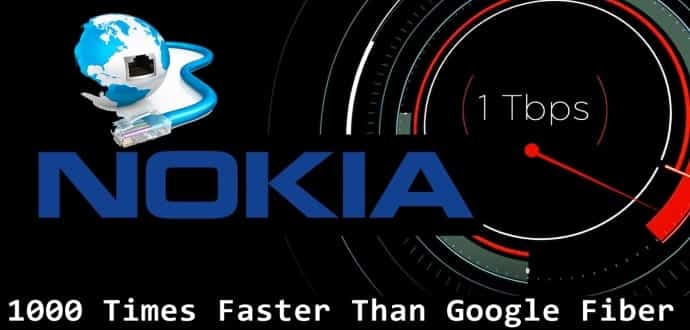Nokia to show off optical technology that’s 1,000 times faster
In an optical technology field trial of a new modulation technique carried out by Nokia Bell Labs, Deutsche Telekom T-Labs and the Technical University of Munich, the researchers were able to reach 1 terabit per second (Tbps) data transmission speed over optical cable, according to a statement published on Friday. The scientific breakthrough could extend the capability of optical networks to meet the ever-increasing data traffic demands of consumers and businesses.
1-Tbps is close to the theoretical maximum transfer rate of a fibre channel, referred to as the Shannon Limit, explained Nokia.
“To guarantee a high customer experience for future services we need optical transmissions with increased capacities, reach and flexibility over deployed fibre infrastructures,” said Deutsche Telekom CTO Bruno Jacobfeuerborn, in a statement.
The companies used a new modulation technique called Probabilistic Constellation Shaping to reach the high data rate.
“The trial of the novel modulation approach, known as Probabilistic Constellation Shaping (PCS), uses quadrature amplitude modulation (QAM) formats to achieve higher transmission capacity over a given channel to significantly improve the spectral efficiency of optical communications,” Nokia explains.
“PCS modifies the probability with which constellation points, the alphabet of the transmission, are used. Traditionally, all constellation points are used with the same frequency. PCS cleverly uses constellation points with high amplitude less frequently than those with lesser amplitude to transmit signals that, on average, are more resilient to noise and other impairments. This allows the transmission rate to be tailored to ideally fit the transmission channel, delivering up to 30 percent greater reach.”
According to the researchers, the speed was fast enough to download an entire Games of Thrones series in high definition within one second.
Marcus Weldon, president Nokia Bell Labs and Nokia CTO, said “Future optical networks not only need to support orders of magnitude higher capacity, but also the ability to dynamically adapt to channel conditions and traffic demand. PCS offers great benefits to service providers and enterprises by enabling optical networks to operate closer to the Shannon Limit to support massive data centre interconnectivity and provide the flexibility and performance required for modern networking in the digital era.”
Nokia Bell Labs will present the results at an industry conference in Dusseldorf, Germany on September 19.
“Information theory is the mathematics of digital technology, and during the Claude Shannon centenary year 2016 it is thrilling to see his ideas continue to transform industries and society,” added Professor Gerhard Kramer of the Technical University of Munich. “PCS, an idea that won a Bell Labs Prize, directly applies Shannon’s principles and lets fibre optic systems transmit data faster, further, and with unparalleled flexibility.”
Earlier this year, researchers at the University College London were able to achieve speeds of 1.25 Tbps in their optical breakthrough.

